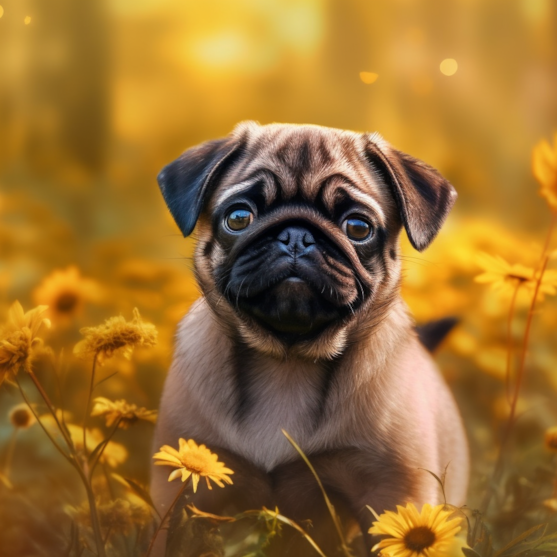Pug Breed Information


The Pug is a small but mighty breed that is loved by many for its charm and personality. Originally from China, Pugs were bred to be companions and have been adored by humans for centuries. They are a member of the toy group, with a weight range of 14-25 pounds and a height of around 10-11 inches.
Pugs are known for their wrinkly, squished faces, and their curly tails. Their expressive eyes and lovable personalities only add to their appeal. Despite their small size, Pugs are sturdy and resilient dogs, making them great for families with children.
One of the most endearing qualities of the Pug is its easy-going temperament. They are friendly and sociable dogs that love nothing more than spending time with their humans. Pugs are known to be playful and curious. They are also adaptable and can do well in a variety of living situations, including apartments and larger homes.
While Pugs may not be the most athletic breed, they do require regular exercise to keep them healthy and happy. They enjoy short walks and playtime, and they can also benefit from mental stimulation activities like puzzles and training.
Characteristics
- Pugs are known for their affectionate and loving nature. They are loyal and devoted to their owners and thrive on human attention
- Despite their small size, Pugs are a bundle of energy and love to play. They enjoy games and toys that keep them active and engaged
- Pugs can thrive in both small apartments and large houses. They are adaptable to various living situations and are content as long as they are with their family
- These sweet pups have a calm demeanor and make great lap dogs. They love nothing more than cuddling up with their owners for some quality time
- Pugs are social animals and get along well with other dogs and humans. They are not typically aggressive and love to make new friends
- They have short, smooth coats that require minimal grooming. They shed moderately and only require weekly brushing to maintain their coat
- Pugs are great with children and make excellent family pets. They are patient and gentle with kids and enjoy playing with them
- This charming breed does not require a lot of exercise and is happy with a daily walk or playtime in the backyard

Appearance
Pugs are small but mighty dogs that pack a lot of charm and personality into their tiny frames. They typically weigh between 14-25 pounds and stand about 10-11 inches tall at the shoulder. One of the most distinctive features of a Pug is its adorable, wrinkled face and short, snub nose. Their round, dark eyes are full of expression, and their velvety ears flop down to frame their face.
One thing that might surprise you about the appearance of Pugs is that they come in a range of colors beyond the standard fawn or black. Pugs can also be found in silver, apricot, and even pure white. Additionally, Pugs have a unique body shape that sets them apart from other small dog breeds. Their barrel-shaped torso, coupled with their short legs, gives them a distinctive waddle when they walk.
Temperament
The Pug's temperament is as endearing as its appearance. These small and charming dogs are known for being friendly, loving, and outgoing. They love to be around people and are often referred to as "lap dogs" because of their affinity for cuddling up with their owners.
Despite their small size, Pugs are known for their big personalities. They are energetic and playful, but also have a calm and relaxed side, making them a great choice for families with children. Pugs are adaptable and can thrive in many different living situations, whether it's a large home or a small apartment.
While they are generally easy to train, they can have a mind of their own at times and may need a firm but gentle hand in training. These dogs are known for making a variety of noises, from snorting to snoring to even howling along with the music. It's one of the many endearing and entertaining qualities that make the Pug such a beloved family dog.
Care
Grooming
Pugs have a short and smooth coat that is easy to maintain. However, they are known for the deep wrinkles on their face, which can trap dirt and moisture, leading to skin infections. As a result, it's important to keep their wrinkles clean and dry.
Their flat faces can lead to dental problems, so it's essential to brush their teeth regularly and have professional cleanings by a veterinarian. Pugs are prone to ear infections due to their floppy ears that can trap moisture and dirt. Gentle cleaning with a cotton ball and ear cleaner can help prevent infections.
Additionally, Pugs tend to shed, especially during shedding season. Regular brushing and bathing can help control shedding and keep their coat looking healthy and shiny.
Exercise Needs
While Pugs are not the most active breed out there, they do need regular exercise to stay healthy and happy. Surprisingly, these little dogs are actually quite agile and love to play. They may not be the best running partners, but they do enjoy a good game of fetch or a brisk walk around the block.
Interestingly, Pugs have been known to participate in dog sports such as obedience and agility competitions. While they may not be the fastest, their intelligence and eagerness to please can make them great contenders with the right training.
Many Pugs enjoy taking a dip in the pool or accompanying their owners on a boat ride. However, as with any breed, it is important to supervise them around water to ensure their safety.
Health
While Pugs are known for their small size and adorable looks, it's important to note that they are prone to certain health issues. Their short snouts can lead to breathing difficulties, and their large, expressive eyes are susceptible to a range of eye problems. Regular veterinary check-ups and proper care can help keep your Pug healthy and happy for years to come.
Despite being a generally healthy breed, Pugs are known for their predisposition to certain health issues. One of the most well-known health concerns for Pugs is their tendency to become overweight. Because they love to eat, it's important to monitor their diet and make sure they get enough exercise to maintain a healthy weight.
Lifespan
Pugs have a lifespan of around 12-15 years, which is relatively long compared to other dog breeds of similar size. However, what is surprising about their lifespan is that they have a tendency to live longer than many other purebred dogs. In fact, some Pugs have been known to live well into their late teens or even early 20s. This is thought to be due to the breed's relatively low activity level and their overall good health.
Training
Pugs are a smart breed and can be trained effectively with positive reinforcement techniques. However, they have a reputation for being stubborn at times, so patience and consistency are key. Start training your Pug as soon as possible, using treats and praise as motivation. Remember to keep training sessions short and engaging, as Pugs can easily become bored.
One thing to keep in mind is that Pugs can be sensitive to their owner's tone of voice, so it's important to use a gentle and encouraging tone during training. Additionally, due to their short snouts, Pugs can have difficulty with strenuous physical activities like running, so it's best to focus on mental stimulation and basic obedience training.
Another unique aspect of Pug training is their tendency towards separation anxiety. Pugs are very social dogs and love being around their owners, which can make leaving them alone a challenge. It's important to start training your Pug to be comfortable with alone time gradually, using positive reinforcement and gradually increasing the duration of time they are left alone. With consistency and patience, Pugs can become well-trained and obedient companions.
History
The history of the Pug breed can be traced back to ancient China, where they were highly valued by the ruling families. These dogs were often kept in the lap of luxury and were even guarded by soldiers. Legend has it that the Pug was bred to be a companion for the ruling families and to serve as a guard dog for their homes.
The Pug was eventually introduced to Europe in the 16th century and quickly became a favorite of the royal courts. Queen Victoria of England was a well-known lover of Pugs and helped to popularize the breed in the UK. In fact, the Pug became a symbol of the Victorian era and was often depicted in paintings and other works of art.
Interestingly, the Pug also played a role in the history of the Dutch royal family. In the 16th century, a Pug named Pompey saved the life of the Prince of Orange by warning him of an approaching assassin. As a result, the Pug became the official dog of the Dutch royal family and can be seen in many portraits of the family throughout history.
Today, the Pug remains a beloved family companion and is known for their quirky personality and adorable wrinkly face. They continue to be a popular breed around the world and have even made appearances in popular movies and TV shows.

